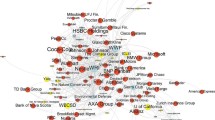Abstract
The paper analyses the effects of economic integration and national environmental policies in a three-country world. There are two factors of production, an environmental good and capital, which is internationally mobile. Two of the countries create an internal market. This is modelled by a reduction in mobility costs. This process of economic integration leads to a relocation of the factors of production. The welfare effects of factor relocation are analysed for different types of environmental policies. Special emphasis is placed on the issue of international externalities such as transboundary pollution spill-overs.
Similar content being viewed by others
References
Dixit, A. (1985), ‘Tax Policy in Open Economies’, in A. J. Auerbach and M. Feldstein, eds., Handbook of Public Economics, North-Holland, Amsterdam, pp. 313–374.
Folmer, H. and C.Howe (1991), ‘Environmental Problems and Policy in the Single European Market’, Environmental and Resource Economics 1(1), 17–41.
Hadley, G. (1961), Linear Algebra, Addison-Wesley, Reading, Mass.
Johnson, H. G. (1953/4), ‘Optimum Tariffs and Retaliation’, Review of Economic Studies 21, 142–153.
Lloyd, P. J. (1982), ‘3 x 3 Theory of Customs Unions’, Journal of International Economics 12, 41–63.
Mäler, K.-G. (1990), ‘International Environmental Problems’, Oxford Review of Economic Policy 6(1), 80–108.
Markusen, J. R. (1975), ‘International Externalities and Optimal Tax Structures’, Journal of International Economics 5, 15–29.
Merrifield (1988), ‘The Impact of Selected Abatement Strategies on Transnational Pollution, the Terms of Trade, and Factor Rewards: A General Equilibrium Approach’, Journal of Environmental Economics and Management 15, 259–284.
Rauscher, M. (1991a), ‘Foreign Trade and the Environment’, in H. Siebert, ed., Environmental Scarcity: The International Dimension, Mohr, Tübingen, pp. 17–31.
Rauscher, M. (1991b), ‘National Environmental Policies and the Effects of Economic Integration’, European Journal of Political Economy 7, 313–329.
Author information
Authors and Affiliations
Rights and permissions
About this article
Cite this article
Rauscher, M. Economic integration and the environment: Effects on members and non-members. Environmental and Resource Economics 2, 221–236 (1992). https://doi.org/10.1007/BF00338244
Issue Date:
DOI: https://doi.org/10.1007/BF00338244




